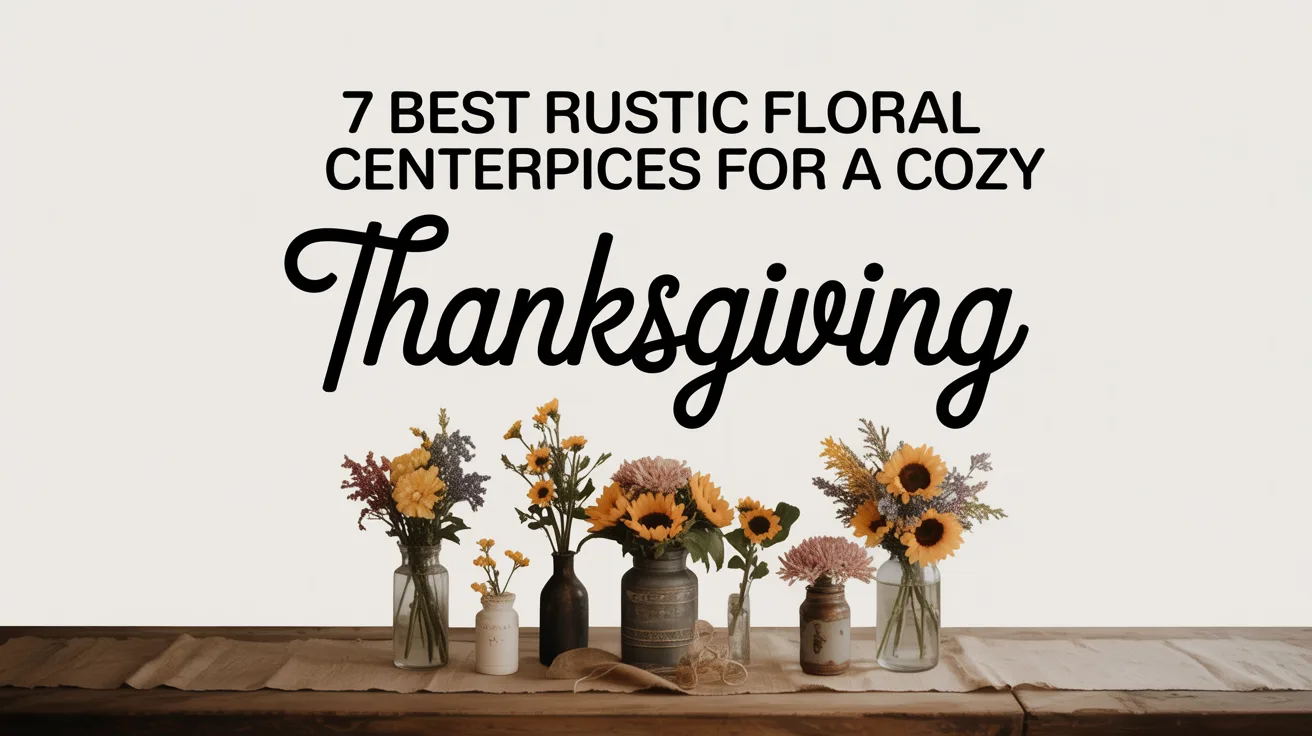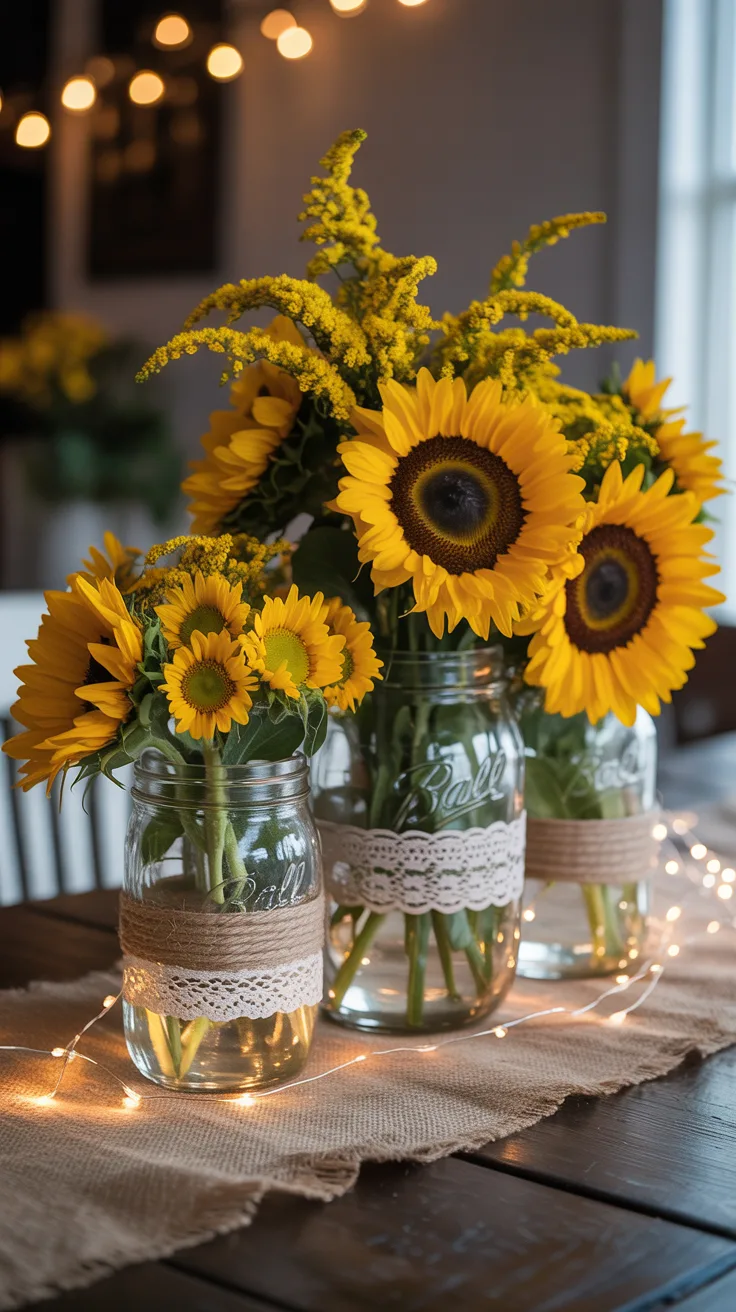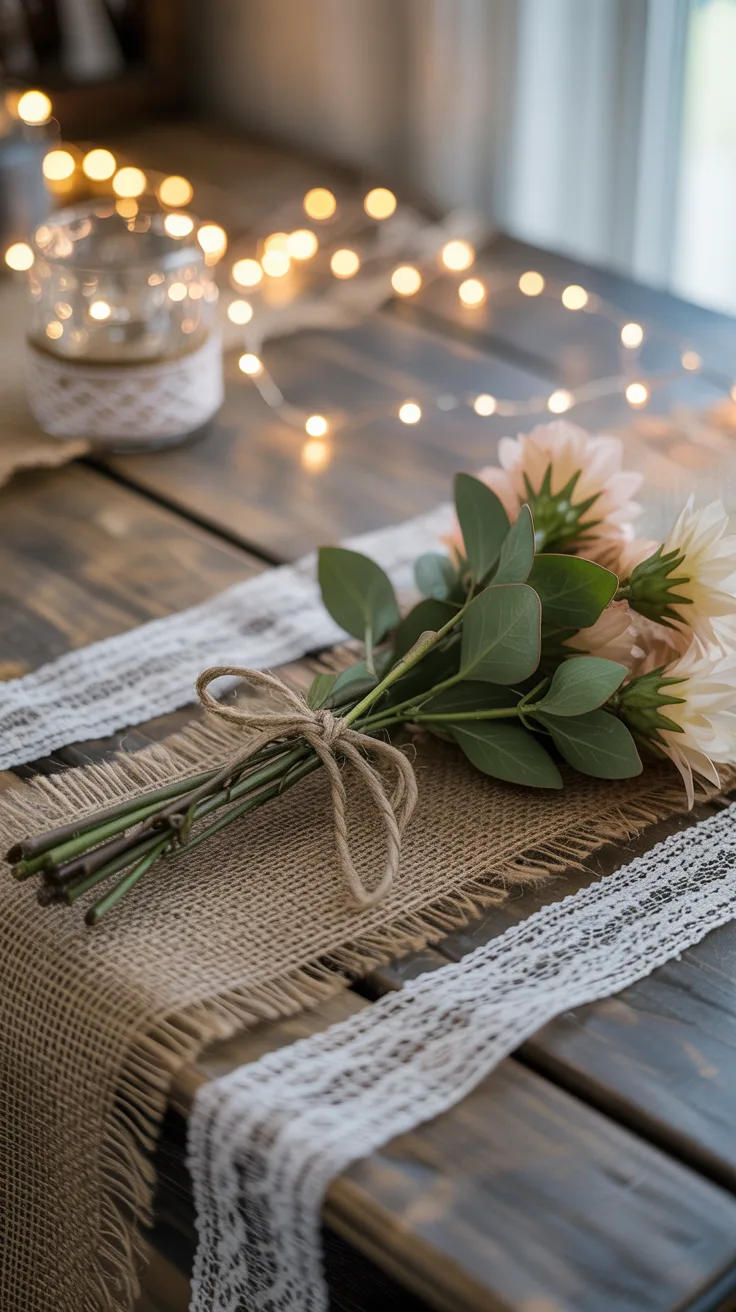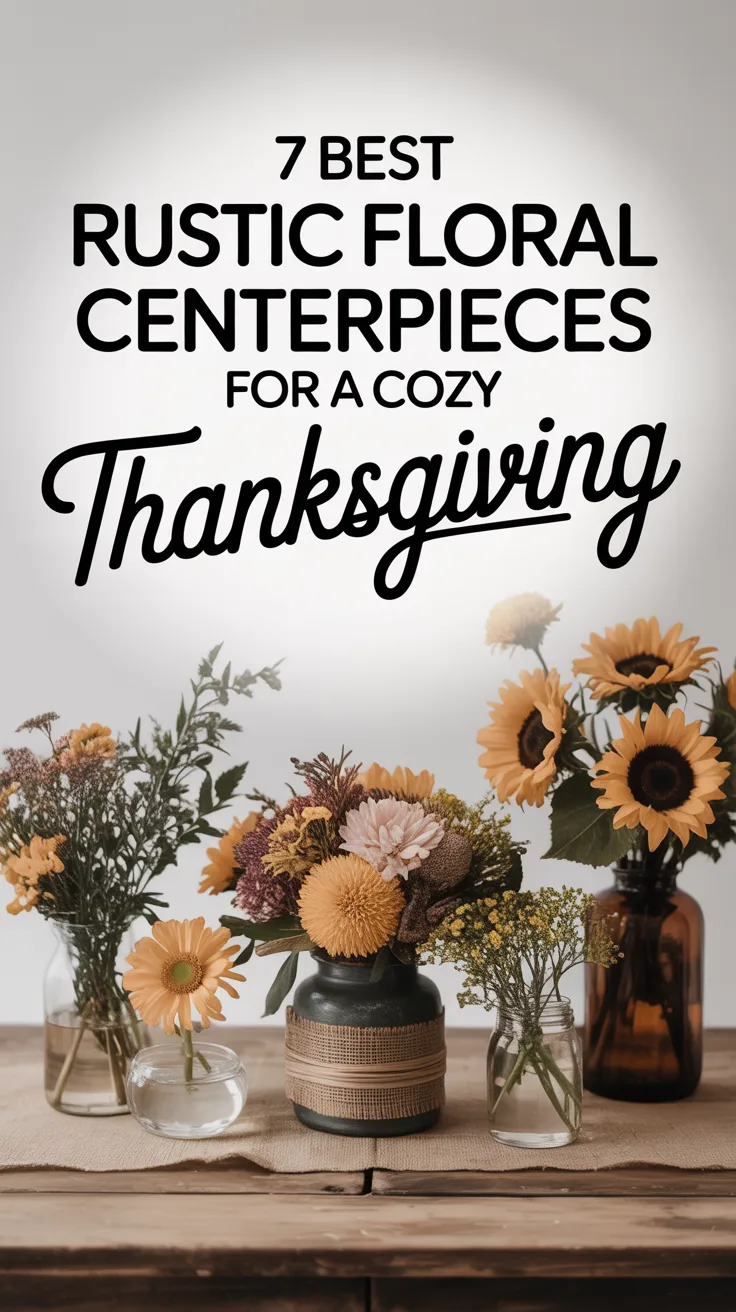
Introduction to Rustic Thanksgiving Floral Decor
There’s something magical about gathering around a beautifully decorated table for Thanksgiving. As someone who’s hosted more family dinners than I can count, I’ve learned that the right centerpiece can transform an ordinary meal into a memorable occasion. Rustic floral centerpieces have become my go-to for creating that warm, inviting atmosphere that makes guests feel instantly at home.
I remember my first attempt at a Thanksgiving centerpiece—a hasty arrangement of supermarket flowers stuffed into my grandmother’s antique vase. It was… well, let’s just say it didn’t quite capture the cozy autumn vibe I was hoping for. Since then, I’ve discovered that incorporating natural elements and a touch of rustic charm creates centerpieces that not only look stunning but also tell a story.
Whether you’re a seasoned decorator or trying your hand at table styling for the first time, these seven rustic floral centerpiece ideas will help you create a warm, inviting atmosphere for your Thanksgiving celebration. Let’s dive in!
1. Mason Jar Magic

Mason jars have been my reliable standby for years, and for good reason! These humble glass containers transform into charming vessels for rustic floral centerpieces with minimal effort. I’ve found that grouping three or five jars of varying heights creates the most visually appealing arrangement.
- Fall flower options: Sunflowers, chrysanthemums, goldenrod, and seeded eucalyptus
- Customization ideas: Wrap with burlap ribbon, twine, or lace
- Placement tip: Arrange in a line down the center of your table or cluster them together
Last Thanksgiving, I forgot to prepare proper floral foam, so I improvised by creating a grid across the jar opening with clear tape. This simple hack kept my flowers perfectly positioned throughout dinner!
Pro Tip: Add a tablespoon of sugar to the water in your mason jars to keep flowers fresher longer. I’ve found this works especially well with sunflowers, which tend to droop quickly otherwise.
2. Wooden Box Wonders

When I discovered an old wooden toolbox in my grandfather’s shed, I immediately saw its potential as a centerpiece container. Wooden boxes bring instant rustic charm to any table setting. The rectangular shape works perfectly for longer tables, allowing guests to see across without craning their necks.
- Box options: Vintage crates, wine boxes, or DIY painted boxes
- Arrangement style: Low and lush, spilling slightly over the edges
- Complementary elements: Mini pumpkins, pinecones, or dried corn husks
My first wooden box arrangement was a disaster because I didn’t consider drainage. The water leaked all over my grandmother’s heirloom tablecloth! Now I always use a plastic liner or individual glass containers hidden inside the box.
Pro Tip: If you’re using a wooden box that isn’t watertight, place small glass jars or votive holders inside to hold water for fresh flowers. This prevents damage to both the box and your table.
3. Burlap and Twine Touches

I used to underestimate the power of simple materials like burlap and twine, but they’ve become essential elements in my rustic decorating toolkit. These humble materials add wonderful texture and a handcrafted feel to any arrangement.
- Burlap applications: Table runners, ribbon wraps for vases, or small accent bows
- Twine uses: Tying flower bundles, wrapping jar rims, or creating delicate bows
- Texture combinations: Mix burlap with lace, velvet ribbon, or copper wire for contrast
I once made the mistake of using heavily scented burlap (who knew that was a thing?) right next to the food. The competing aromas were… interesting. Now I always air out any fabric elements before placing them on the dining table.
Pro Tip: Fray the edges of burlap ribbon deliberately for an extra rustic touch. I gently pull a few threads from each edge to create a soft, organic border that adds beautiful texture.
4. Log Slice Layers
After a storm brought down a tree in our yard last year, I salvaged several branches and had them cut into slices. These natural wooden platforms have become the foundation for some of my favorite centerpieces. There’s something so grounding about bringing this literal piece of nature to the table.
- Size options: Small coasters (3-4″), medium platforms (5-7″), or statement pieces (8-12″)
- Arrangement styles: Single pillar candle, trio of bud vases, or moss-covered display
- Finishing touches: Leave natural or seal with food-safe mineral oil for a subtle sheen
I learned the hard way that freshly cut wood can sometimes “weep” sap, especially pine. After one sticky situation, I now always cure my log slices properly before using them with linens.
Pro Tip: Stack log slices of different diameters to create a tiered effect that adds height and visual interest to your centerpiece without blocking conversation across the table.
5. Wheat and Wildflower Wonders
There’s something poetic about decorating a Thanksgiving table with wheat—a symbol of harvest and abundance. Combined with wildflowers, it creates a centerpiece that feels both rustic and refined. I started incorporating wheat after visiting a local farm during harvest season and being captivated by its golden beauty.
- Wheat varieties: Traditional golden wheat, black beard wheat, or ornamental millet
- Complementary flowers: Yarrow, statice, strawflower, or globe amaranth
- Container ideas: Vintage pitchers, copper vessels, or woven baskets
My first wheat arrangement shed little bits everywhere as it dried further. Now I always gently spray dried elements with hairspray to keep them intact—a trick I learned from a florist friend.
Pro Tip: Dried arrangements can last for months when kept out of direct sunlight. Create your wheat and wildflower centerpiece up to two weeks before Thanksgiving to save time during the busy holiday rush.
6. Pumpkin and Gourd Arrangements
Nothing says fall quite like pumpkins and gourds. I’ve found that incorporating these seasonal staples into floral arrangements creates instantly recognizable autumn centerpieces. Plus, they double as containers, which is always a win in my book!
- Container options: Hollowed mini pumpkins, butternut squash, or acorn squash
- Preservation methods: Coat the inside with floral preservative or use a water-filled vial
- Color palettes: Traditional orange with burgundy and gold, or white/blue pumpkins with lavender and sage
I once created what I thought was a stunning pumpkin centerpiece, only to discover halfway through dinner that it was slowly collapsing as the pumpkin softened. I now always use a plastic liner inside for structural support.
Pro Tip: Choose smaller, firmer pumpkins and gourds that will last throughout your gathering. If you’re creating the arrangement more than a day in advance, select varieties like ‘Cinderella’ or ‘Fairytale’ pumpkins, which have thicker rinds and longer staying power.
7. Candlelit Charm
There’s a reason candlelight has been enhancing dinner tables for centuries—it creates an ambiance that simply can’t be replicated. When combined with flowers in a rustic setting, candles elevate the entire experience. I’ve experimented with various candle arrangements over the years and found that mixing heights and textures creates the most magical effect.
- Candle types: Beeswax pillars, floating candles, or flameless LED options
- Holder ideas: Vintage candlesticks, hollowed apple tea lights, or mason jar lanterns
- Safety considerations: Keep flames away from foliage and use hurricane glasses for protection
I’ll never forget the year my beautiful candle centerpiece caused a minor panic when a dried leaf caught a spark. Thankfully, a quick-thinking relative doused it with water before any damage occurred. Now I’m extra cautious about keeping dried elements away from open flames.
Pro Tip: Place candles in clear glass containers filled partially with cranberries, corn kernels, or coffee beans for added color and stability. This creates a beautiful layered look while keeping the candles securely in place.
Conclusion: Creating a Cozy Thanksgiving Atmosphere
After years of Thanksgiving hosting, I’ve found that rustic floral centerpieces consistently create the warm, inviting atmosphere I want for my guests. They bring nature’s beauty to the table and provide a perfect conversation starter as family and friends gather.
The beauty of rustic design is its forgiving nature—imperfections add character rather than detract from the overall look. So don’t worry about creating something picture-perfect. Instead, focus on incorporating elements that feel meaningful to you and your guests.
Remember that the best centerpieces enhance rather than hinder the dining experience. Keep arrangements low enough for eye contact across the table, and consider how they’ll interact with your serving dishes. With these seven ideas as inspiration, you’re well on your way to creating a Thanksgiving table that’s as beautiful as the memories you’ll make around it.
Frequently Asked Questions
What flowers are best for rustic centerpieces?
The most suitable flowers for rustic arrangements have a natural, slightly wild appearance. I’ve had great success with sunflowers, dahlias, chrysanthemums, cosmos, zinnias, and asters. Don’t forget to incorporate textural elements like seeded eucalyptus, hypericum berries, or rose hips. Native wildflowers and grasses from your region will add an authentic touch that connects your centerpiece to your local landscape.
How can I make my floral arrangements last longer?
I’ve learned several tricks over the years: Start with clean vases, remove any foliage that would sit below the waterline, cut stems at an angle under running water, and change the water daily if possible. Adding a floral preservative or even a penny to the water can help extend bloom life. For Thanksgiving specifically, I create my arrangements the day before and keep them in a cool room overnight to ensure they look fresh for the main event.
Can I use artificial flowers for a rustic look?
Absolutely! I’ve used high-quality silk flowers in many arrangements, especially when I want to prepare well in advance. The key is selecting artificial blooms with natural coloration and mixing them with real textural elements like dried grasses, pinecones, or fresh greenery. This combination creates a convincing look while offering the convenience of a centerpiece that won’t wilt during your gathering.
What other elements can enhance a rustic centerpiece?
Some of my favorite additions include acorns, pinecones, cinnamon sticks, dried orange slices

